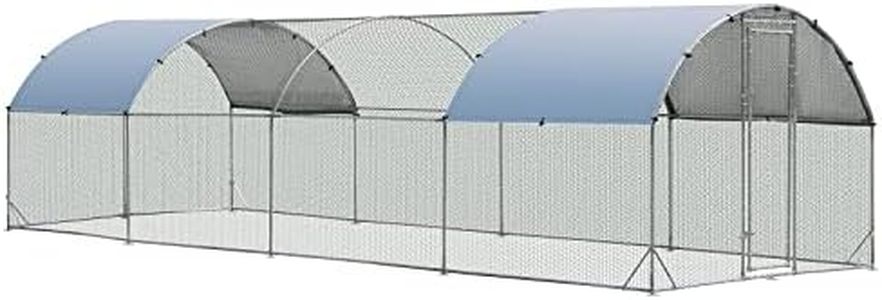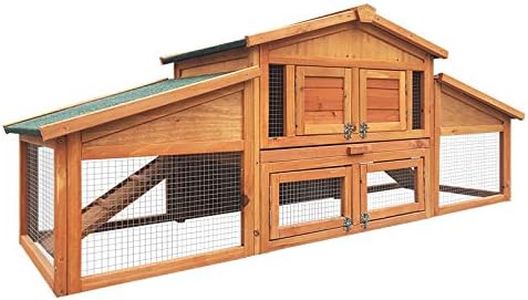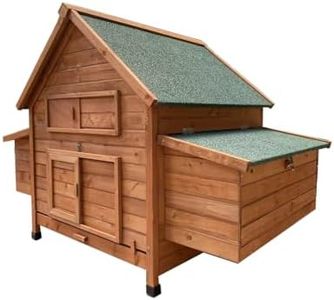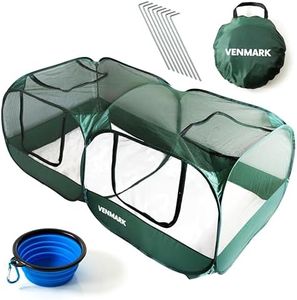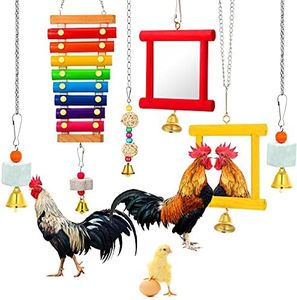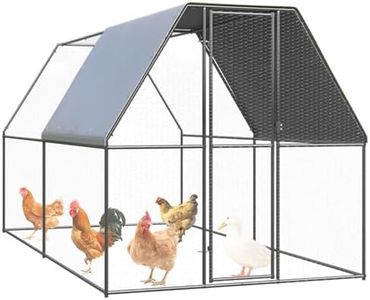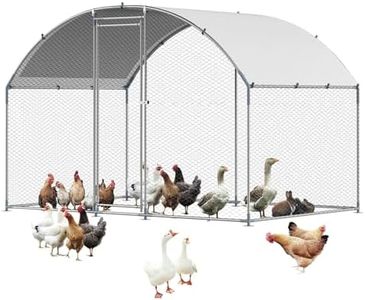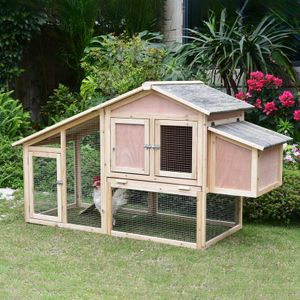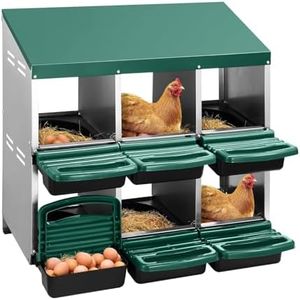We Use CookiesWe use cookies to enhance the security, performance,
functionality and for analytical and promotional activities. By continuing to browse this site you
are agreeing to our privacy policy
10 Best Chicken Coops
From leading brands and best sellers available on the web.By clicking on a link to a third party's website, log data is shared with that third party.
Buying Guide for the Best Chicken Coops
Choosing the right chicken coop is essential for the health, safety, and happiness of your chickens. A good coop will provide shelter from weather, predators, and give your flock a comfortable space to lay eggs and roost. It’s important to think about your climate, flock size, and how much time you can spend on maintenance, as these factors can help guide your choice to a coop that fits your needs.Size and CapacityThis refers to how many chickens a coop can comfortably house. It's important because overcrowding can lead to health issues and stress among chickens. Generally, each chicken should have at least 2-4 square feet inside the coop and 8-10 square feet in an outdoor run. Small coops are good for 2-4 chickens, medium for 5-8, and large for more than 8. Pick a size based on your current flock and whether you plan to expand in the future.
VentilationVentilation means how well air moves through the coop. It's vital for keeping fresh air, reducing moisture, and avoiding bad odors or respiratory issues for your chickens. Look for coops with windows, vents, or mesh panels. In hot climates, more ventilation is better, but in colder areas, balance it with protection from drafts. Consider your local weather to decide how much ventilation is needed.
Predator ProtectionPredator protection is all about how well the coop can keep out animals like raccoons, foxes, or snakes. This is important for your chickens’ safety, especially if you live in an area with lots of wildlife. Coops with strong locks, heavy-duty wire mesh, and solid construction offer better security. If you notice a lot of predators nearby, choose features like hardware cloth over cheaper chicken wire and avoid gaps bigger than half an inch.
Ease of CleaningHow easy the coop is to clean affects not only your workload but also the health of your chickens. Disease and pests thrive in dirty coops. Features like pull-out trays, large doors, and smooth surfaces can make cleaning much simpler. If you are short on time or want less maintenance, look for coops advertised as easy to clean or with minimal corners and crevices.
Nesting Boxes and RoostsNesting boxes are where chickens lay eggs, and roosts are where they sleep. The right amount and design make chickens comfortable and improve egg production. You'll need about one nesting box for every 3-4 hens and enough roost space so each chicken can perch without crowding. If egg-laying is a priority, look for sturdy, accessible nesting boxes and properly placed roosts.
Weather ProtectionWeather protection refers to how well the coop shields chickens from rain, wind, cold, and heat. Good roofing, solid walls, and raised floors can protect from dampness and drafts. In hot areas, look for shade and ventilation; in cold areas, insulation and tight construction are more important. Match your coop’s level of protection with your local climate to keep chickens healthy year-round.
PortabilitySome coops are designed to be moved around (often called chicken tractors). Portability is handy if you want to give chickens fresh grass regularly or shift the coop for cleaning reasons. Lightweight materials and wheels make moving easier. If you like moving things around in your yard or want to fertilize new areas of lawn, consider portable options; otherwise, a stationary coop may suit you better.

